Themed collection Where will cleaner H2O spring from?

Recent advances in hexavalent chromium removal from aqueous solutions by adsorptive methods
Despite the extensive existence of adsorbents for Cr(VI) removal from aqueous solutions, new adsorbents and modification of existing adsorbing materials are continuously sought after.
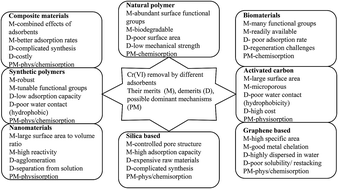
RSC Adv., 2019,9, 26142-26164
https://doi.org/10.1039/C9RA05188K
Removal of Hg(II) in aqueous solutions through physical and chemical adsorption principles
Adsorption has been the focus of research on the treatment of heavy metal mercury pollution since it is among the most toxic heavy metals in existence.
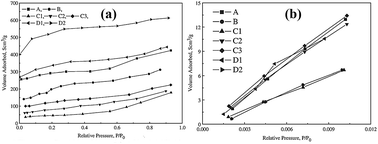
RSC Adv., 2019,9, 20941-20953
https://doi.org/10.1039/C9RA01924C
A review of the applications of ion floatation: wastewater treatment, mineral beneficiation and hydrometallurgy
The applications, progress and outlook of ion flotation are discussed.
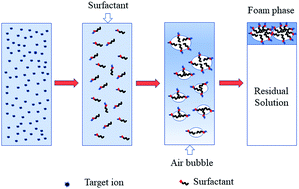
RSC Adv., 2019,9, 20226-20239
https://doi.org/10.1039/C9RA02905B
Confluence of montmorillonite and Rhizobium towards the adsorption of chromium(VI) from aqueous medium
Chromium in its hexavalent oxidation state is carcinogenic and wastewater from the electroplating industry is one of the principal sources of pollution.

RSC Adv., 2019,9, 28478-28489
https://doi.org/10.1039/C9RA05528B
Quantification and isotherm modelling of competitive phosphate and silicate adsorption onto micro-sized granular ferric hydroxide
Adsorption of phosphate onto ferric hydroxide in complex waters is influenced by effects of competition, displacement and surface blockage.

RSC Adv., 2019,9, 23642-23651
https://doi.org/10.1039/C9RA04865K
Packaging vertically aligned carbon nanotubes into a heat-shrink tubing for efficient removal of phenolic pollutants
An adsorption tube prepared by heat-shrinkage of vertically aligned carbon nanotubes provides high adsorption capacity for phenolic compounds.
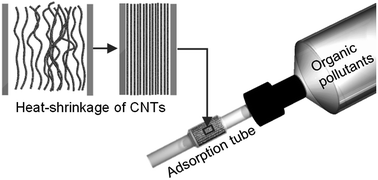
RSC Adv., 2019,9, 22205-22210
https://doi.org/10.1039/C9RA03948A
Preparation of a poly(acrylic acid) based hydrogel with fast adsorption rate and high adsorption capacity for the removal of cationic dyes
A biocompatible Dex-MA/PAA hydrogel was prepared through copolymerization of glycidyl methacrylate substituted dextran (Dex-MA) with acrylic acid (AA), which was applied as the adsorbent to remove cationic dyes from aqueous solutions.
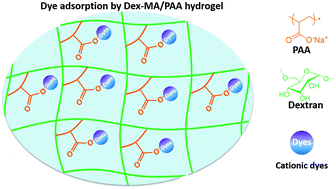
RSC Adv., 2019,9, 21075-21085
https://doi.org/10.1039/C9RA03077H
Electrospun silica nanofiber mats functionalized with ceria nanoparticles for water decontamination
This study demonstrates the fabrication of nanoceria-immobilized silica nanofibers for efficient water decontamination with easy reuse and regeneration properties.
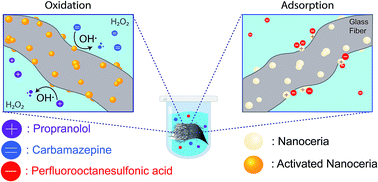
RSC Adv., 2019,9, 19408-19417
https://doi.org/10.1039/C9RA03467F
Experimental study on the treatment of acid mine drainage by modified corncob fixed SRB sludge particles
A cost-effective system for acid mine drainage removal was developed with the key role of alkaline H2O2 modified corncob and sulfate reducing bacteria.
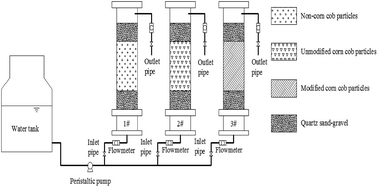
RSC Adv., 2019,9, 19016-19030
https://doi.org/10.1039/C9RA01565E
Superhydrophobic foam prepared from high internal phase emulsion templates stabilised by oyster shell powder for oil–water separation
Poly(styrene-divinylbenzene) foam was synthesized through a high internal phase emulsion (HIPE) technique with Span 80 and superfine oyster shell powder as a co-emulsifier, and the foam exhibited excellent superhydrophobicity and oleophilicity.
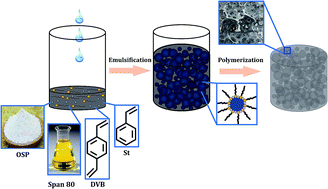
RSC Adv., 2019,9, 17543-17550
https://doi.org/10.1039/C9RA01258C
Ultrasound-assisted sorption of Pb(II) on multi-walled carbon nanotube in presence of natural organic matter: an insight into main and interaction effects using modelling approaches of RSM and BRT
The proposed mechanism for effect of HA on Pb(II) removal using MWCNTs.

RSC Adv., 2019,9, 16083-16094
https://doi.org/10.1039/C9RA02881A
A practical adsorption model for the formation of submerged oils under the effect of suspended sediments
An adsorption model was proposed for predicting the formation of submerged oils under the effect of suspended sediments.
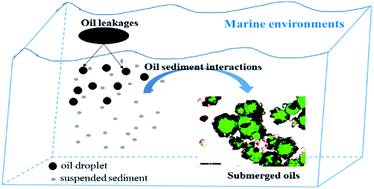
RSC Adv., 2019,9, 15785-15790
https://doi.org/10.1039/C9RA02775K
Development of effective sequence multi-barrier reactive media for nitrate remediation in groundwater systems
Using surface characterization and a decomposition study, carbonaceous materials are found to have longevity potential in novel reactive media for in situ denitrification.

RSC Adv., 2019,9, 15437-15447
https://doi.org/10.1039/C8RA10669J
Decolorization and degradation analysis of Disperse Red 3B by a consortium of the fungus Aspergillus sp. XJ-2 and the microalgae Chlorella sorokiniana XJK
The consortium of fungi and microalgae exhibited simultaneous removal of color, nutrients and COD in simulated wastewater.

RSC Adv., 2019,9, 14558-14566
https://doi.org/10.1039/C9RA01169B
Investigation of novel nanomaterial for the removal of toxic substances from contaminated water
Preparation of novel nanosphere material for efficient capture of toxic substances. The nanosphere material was systematically investigated for the capture of a toxic substance. The material displayed high sensitivity with high adsorption efficiency.
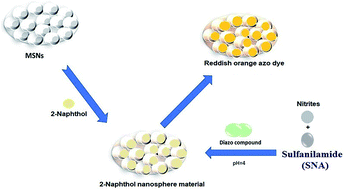
RSC Adv., 2019,9, 14167-14175
https://doi.org/10.1039/C9RA00383E
About this collection
This article collection will get you thinking about removal of wastewater pollutants and clean-up of oil spills, and even offer answers to questions that are fundamental to your own work